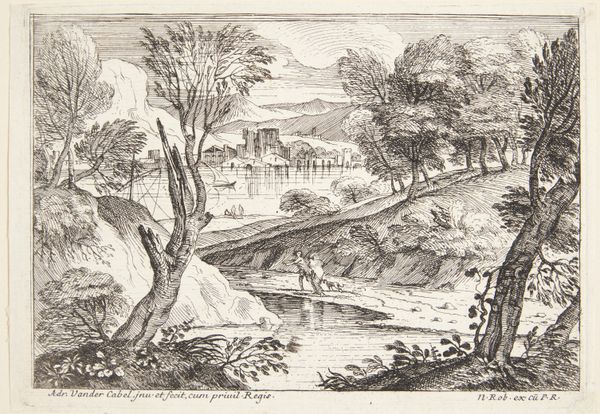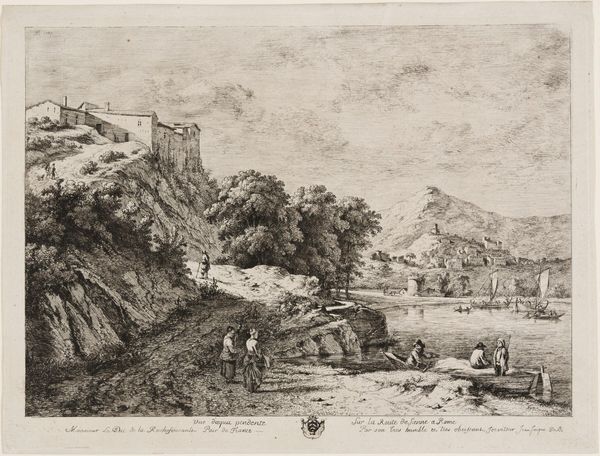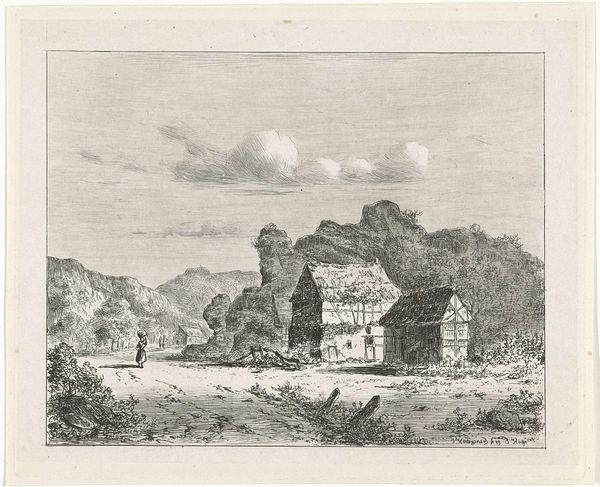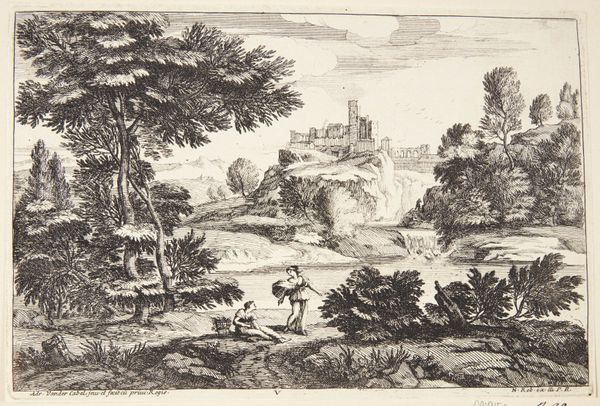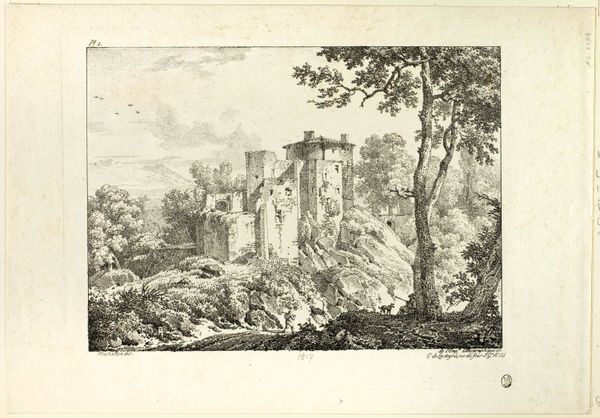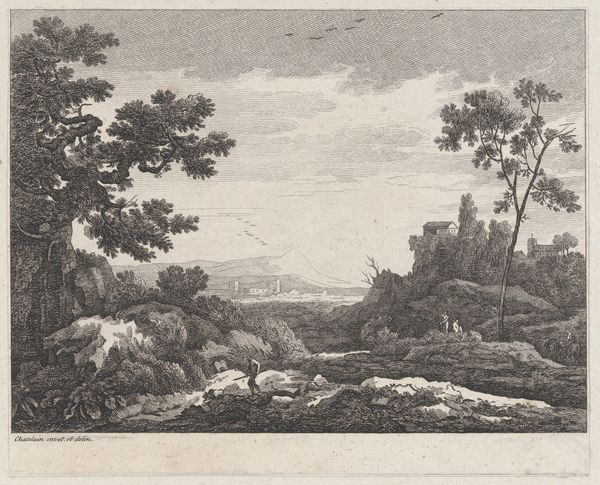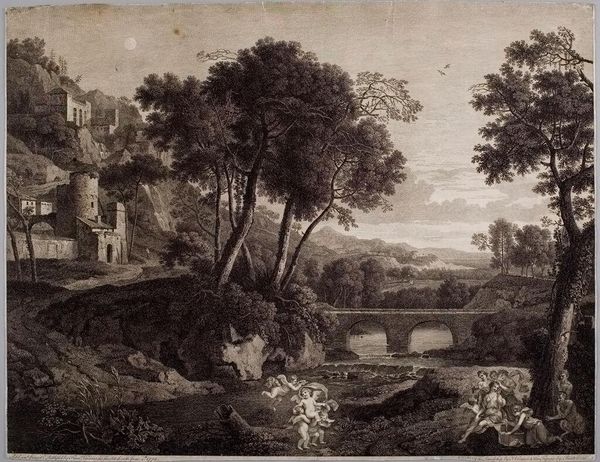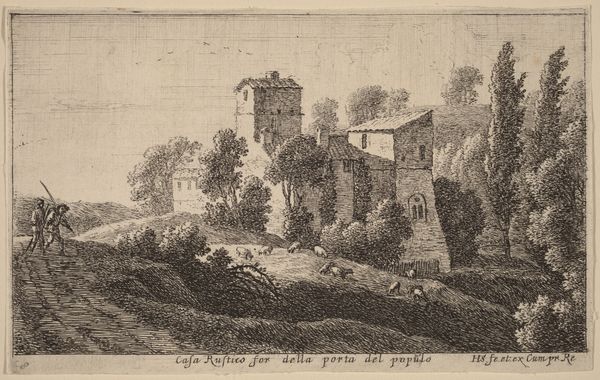
print, etching, architecture
#
baroque
# print
#
etching
#
old engraving style
#
landscape
#
etching
#
cityscape
#
architecture
#
building
Dimensions: height 115 mm, width 182 mm
Copyright: Rijks Museum: Open Domain
Curator: Herman van Swanevelt's "View of Acqua Acetosa," created between 1652 and 1653, captures a serene scene near Rome, now residing in the Rijksmuseum collection. Editor: Immediately, I'm struck by the overall tonal unity – a delicate web of lines that, despite its monochrome nature, evokes a tangible sense of depth and atmospheric perspective. Curator: It’s fascinating how van Swanevelt, positioned during the Baroque period and influenced by his contemporaries, crafts this landscape as more than just a visual depiction. We should consider it through lenses of power, wealth, and the aestheticization of nature that served distinct social functions. Consider the way wealthy people at the time were literally reshaping their land and world according to a desire for a certain form of beauty! Editor: Indeed! Note the artist's use of delicate, layered strokes, especially visible in the rendition of foliage and distant architecture. It creates a visual harmony, carefully structuring a space that recedes gradually, focusing the eye towards the building nestled amongst the distant trees. This compositional control adds a layer of complexity that transforms mere scenery into visual architecture. Curator: And within this meticulously rendered setting, what narratives are subtly conveyed? The figures engaged in everyday activities—traveling by boat or walking through the landscape—are rendered on a diminutive scale in relation to the buildings. They become signifiers of class and positionality—a commentary on how landscape art operated during this era! It’s a fascinating, early instance of the intersection between ecology and socioeconomic status, in my opinion. Editor: True, and focusing on the foreground details, we see Van Swanevelt expertly manipulated the etching medium to achieve variations in texture. Observe how the rocks are distinctly different from the softly rendered vegetation. Such details enrich the image by creating micro-patterns that contribute to overall texture! Curator: Van Swanevelt's "View of Acqua Acetosa," beyond its immediate aesthetic appeal, provides invaluable insight into the era’s ideological landscape, revealing a worldview shaped by power dynamics and social constructions of landscape as art. Editor: Yes, indeed! Ultimately, by harmonizing structural and contextual readings, one is afforded a more comprehensive perspective regarding not only artistic construction, but societal structure.
Comments
No comments
Be the first to comment and join the conversation on the ultimate creative platform.


